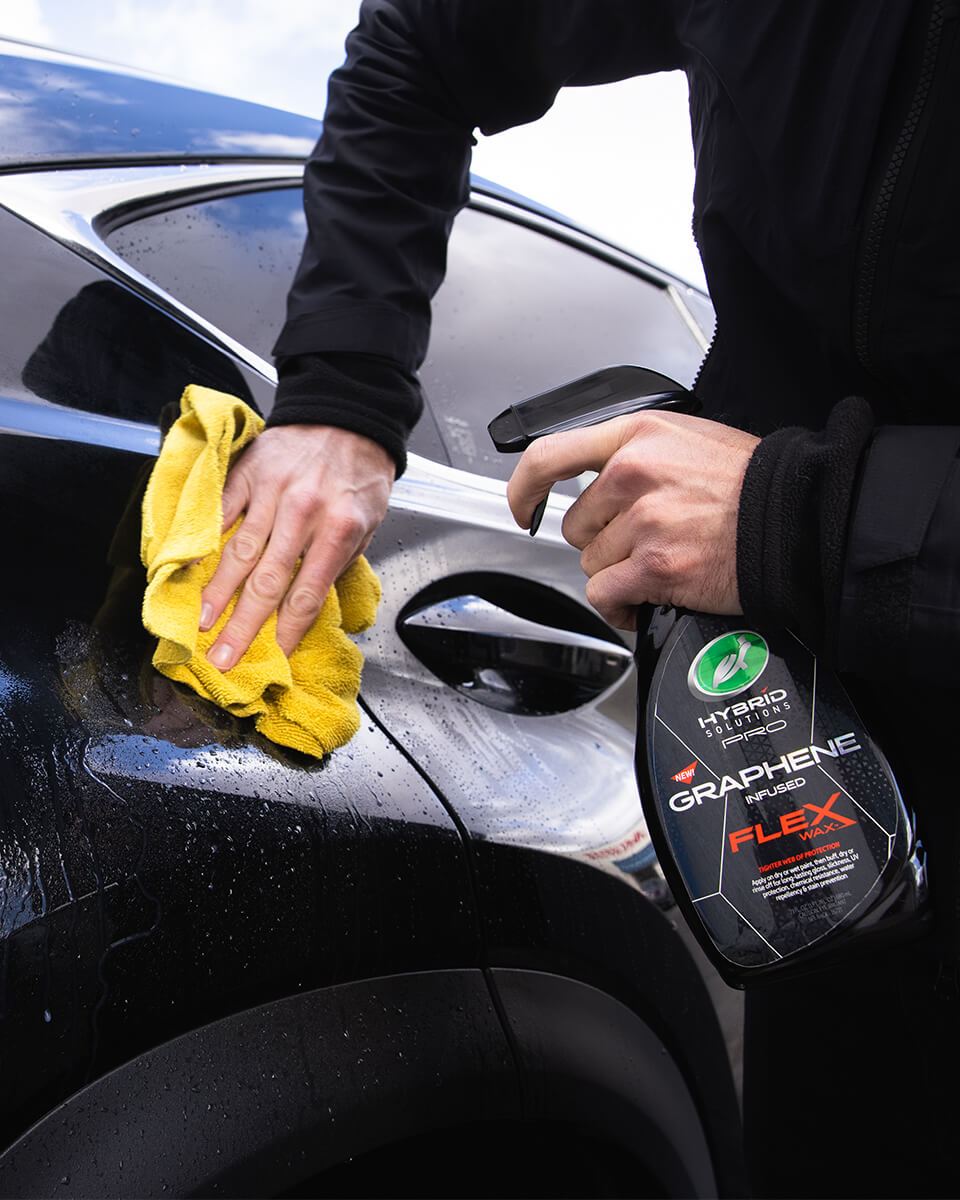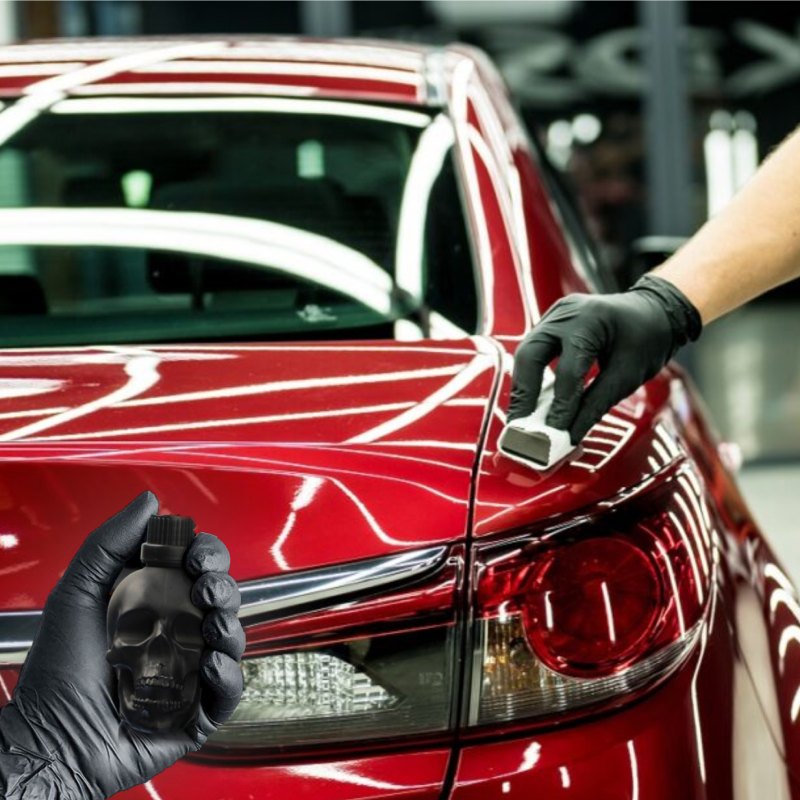Why more drivers are switching to Ceramic Coating Newark this year
Exploring the Science Behind Car Ceramic Coating and Its Safety Properties
The scientific research of car ceramic coating provides a remarkable research in advanced automobile security. Composed mostly of silicon dioxide and polymers, these layers develop a durable bond with lorry paint. This communication boosts resilience against environmental hazards while using hydrophobic benefits. The details of just how these coatings work and their long-lasting advantages stay much less recognized. Ceramic Coating Newark. Unboxing these information reveals why ceramic finishes are coming to be a recommended choice for automobile care
What Is Ceramic Coating?
Ceramic coating is a liquid polymer that chemically bonds to the surface area of a vehicle's paint. This advanced safety layer boosts durability and supplies exceptional resistance to environmental aspects. Unlike typical wax or sealers, which supply temporary defense, ceramic coatings create a durable guard that can withstand harsh problems such as UV rays, acidic contaminants, and extreme weather condition. When used properly, the coating forms a hydrophobic surface area, causing water to grain and slide off, which aids in maintaining the automobile's sanitation. In addition, it uses improved gloss and depth to the paint, making the automobile appear more refined and dynamic. The application procedure commonly includes comprehensive surface prep work, including cleaning and polishing, to guarantee peak bonding. As a result, ceramic layers are coming to be increasingly prominent amongst car lovers and those seeking to secure their investments, guaranteeing to maintain the lorry's visual appeal while lowering the regularity of upkeep.
The Structure of Ceramic Coatings
The elaborate formulation of ceramic finishes largely consists of silicon dioxide (SiO2), which is derived from all-natural sources like quartz and sand. This key component supplies the foundation for the coating's durability and protective top qualities. In enhancement to SiO2, ceramic coatings typically include numerous polymers and ingredients that improve attachment, versatility, and resistance to environmental elements. These compounds function synergistically to produce a durable barrier versus impurities such as dust, chemicals, and UV rays.Furthermore, some solutions incorporate titanium dioxide (TiO2) or other nanomaterials, which can enhance the coating's hydrophobic properties, resulting in better water repellency. The specific composition can differ considerably among manufacturers, impacting efficiency and long life. Ultimately, the combination of these elements culminates in a safety layer that not just boosts the aesthetic appeal of automobiles however also offers to prolong their lifespan by securing the surface area from potential damage.
Exactly How Ceramic Coatings Work
Comprehending how ceramic coverings work entails exploring their chemical structure, which adds to their protective qualities. The application process is essential for accomplishing ideal outcomes, while longevity and sturdiness variables determine the coating's effectiveness over time. With each other, these components highlight the advantages and performance of ceramic finishes for lorry security.
Chemical Make-up Explained
While lots of car owners seek durable defense for their lorries, the chemical make-up of ceramic finishings plays an essential role in their performance. These finishings mainly contain silicon dioxide (SiO2), which is derived from all-natural minerals. This substance creates a strong bond with the lorry's paint, creating a durable, protective layer. In addition, lots of ceramic finishes include titanium dioxide (TiO2), boosting their hydrophobic residential properties and resistance to UV rays. The presence of polysiloxanes can additionally improve versatility and resilience. With each other, these aspects add to the coating's capacity to fend off water, dust, and impurities, while likewise offering a high-gloss finish. Recognizing this chemical structure assists car proprietors value the durable protection supplied by ceramic coverings.
Application Refine Review
Applying ceramic finishes involves a thorough procedure that assures ideal bonding and security for the automobile's surface. Originally, extensive cleansing and decontamination of the car's outside are carried out to eliminate dirt, gunk, and previous waxes. This step verifies that the surface area is devoid of impurities that could impede bond. Following this, the paint is often polished to boost clearness and get rid of any kind of imperfections. Once prepared, the ceramic coating is applied in small sections making use of an applicator pad, allowing for consistent insurance coverage. The coating is after that left to treat, creating a solid chemical bond with the surface area. Proper healing times and problems are important, as they confirm the coating attains its optimum effectiveness and safety top qualities.
Long Life and Resilience Elements
Ceramic finishes are developed to provide durable protection through their innovative chemical composition, which creates a durable barrier against ecological pollutants. The resilience of these finishes is affected by factors such as the density of the application, the quality of the item, and the conditions under which the vehicle is subjected. High-grade ceramic finishes can last a number of years, resisting scrapes, UV rays, and chemical stains. Correct maintenance, including normal washing and routine reapplication, can additionally enhance long life. Additionally, environmental elements like environment and direct exposure to toxins can influence the lifespan of the coating. On the whole, when applied and maintained correctly, ceramic coverings provide extraordinary sturdiness, making them a popular selection for car fanatics seeking to preserve their automobile's look.
Hydrophobic Properties and Water Repellency
Hydrophobic homes are a trademark of top quality car ceramic coatings, substantially enhancing the automobile's surface area performance. These layers create a molecular bond with the car's paint, leading to a surface that fends off water efficiently. When water enters into contact with a ceramic-coated surface area, it grains up and rolls off, decreasing the amount of liquid that remains on the paint. This habits not just adds to an aesthetically pleasing appearance however additionally lowers the accumulation of pollutants such as dust, gunk, and road salts.The enhanced water repellency leads to less complicated cleaning and maintenance, as less initiative is needed to get rid of undesirable substances. On top of that, the hydrophobic nature of ceramic layers assists in avoiding water places, which can mar the coating of uncoated surface areas. Generally, the unification of hydrophobic residential or commercial properties in ceramic finishes plays an essential role in keeping the car's immaculate look while simplifying maintenance.
Security Against Scratches and UV Damages
Car ceramic coverings provide substantial protection versus scrapes and UV damage. The scrape resistance device produces a sturdy layer that takes in effects, while the UV shielding advantages aid preserve the car's paint stability in time. Together, these attributes add to a longer-lasting and visually enticing surface.
Scratch Resistance Device
Using advanced technology, ceramic layers supply a robust shield versus scratches and UV damages, boosting the long life and appearance of automobile surfaces. The scratch resistance mechanism of these finishes is credited to their distinct molecular structure, which develops a durable bond with the lorry's paint. This bond produces a hard, protective layer that can absorb effects and stand up to abrasions. In addition, the smooth surface area of the coating reduces friction, making it hard for impurities to adhere and trigger scrapes. The chemical structure of ceramic coatings commonly includes nanoparticles that reinforce the protective layer, additional boosting its resilience. Vehicles treated with ceramic coverings display noticeably improved scratch resistance compared to traditional wax or sealants, ensuring a pristine finish over time.
UV Shielding Benefits
The safety high qualities of ceramic coatings expand beyond scrape resistance to include significant UV securing benefits. These layers produce a durable barrier that mirrors dangerous ultraviolet rays, securing the vehicle's paint and underlying products. Prolonged direct exposure to UV radiation can result my site in fading, oxidation, and degeneration of the paint surface. By integrating ceramic finishings, car proprietors can efficiently minimize these risks, maintaining the visual charm and integrity of their cars. In addition, the UV blocking buildings add to improved long life, lowering the frequency of painting and maintenance. Ultimately, the assimilation of ceramic layers uses an extensive service for safeguarding lorries from the harmful effects of sunlight direct exposure, making sure a sustained, vibrant look with time.
The Longevity and Upkeep of Ceramic Coatings

Often Asked Questions
Can Ceramic Coating Be Applied to Any Kind Of Automobile?
Ceramic coating can be related to different kinds of lorries, consisting of vehicles, trucks, and motorbikes. Surface area preparation and compatibility with particular materials are important for optimal adhesion and performance of the coating.
Just How Much Does Ceramic Coating Generally Cost?
Ceramic coating generally costs in between $500 and $2,000, depending on aspects such as automobile dimension, coating quality, and professional application. The investment can supply durable protection and boost the automobile's look in time.

Is Specialist Application Essential for Finest Results?
The need of specialist application frequently relies on preferred results. Experts generally guarantee proper surface area prep work and application methods, bring about perfect bonding and longevity of the coating, which might be challenging for unskilled individuals to attain.
Can Ceramic Coatings Be Gotten Rid Of or Fixed?
Ceramic finishings can be removed or fixed, though the procedure may call for certain solvents or methods - Ceramic Coating Newark. Proper elimination is vital to stay clear of damages to the underlying surface, stressing the importance of specialist assistance for suitable outcomes
How Does Ceramic Coating Compare to Standard Wax?
The comparison between ceramic coating and conventional wax discloses that ceramic finishings provide exceptional longevity, improved protection versus ecological contaminants, and longer-lasting shine, while wax calls for much more constant application pop over to this web-site and provides less total resistance to damage.